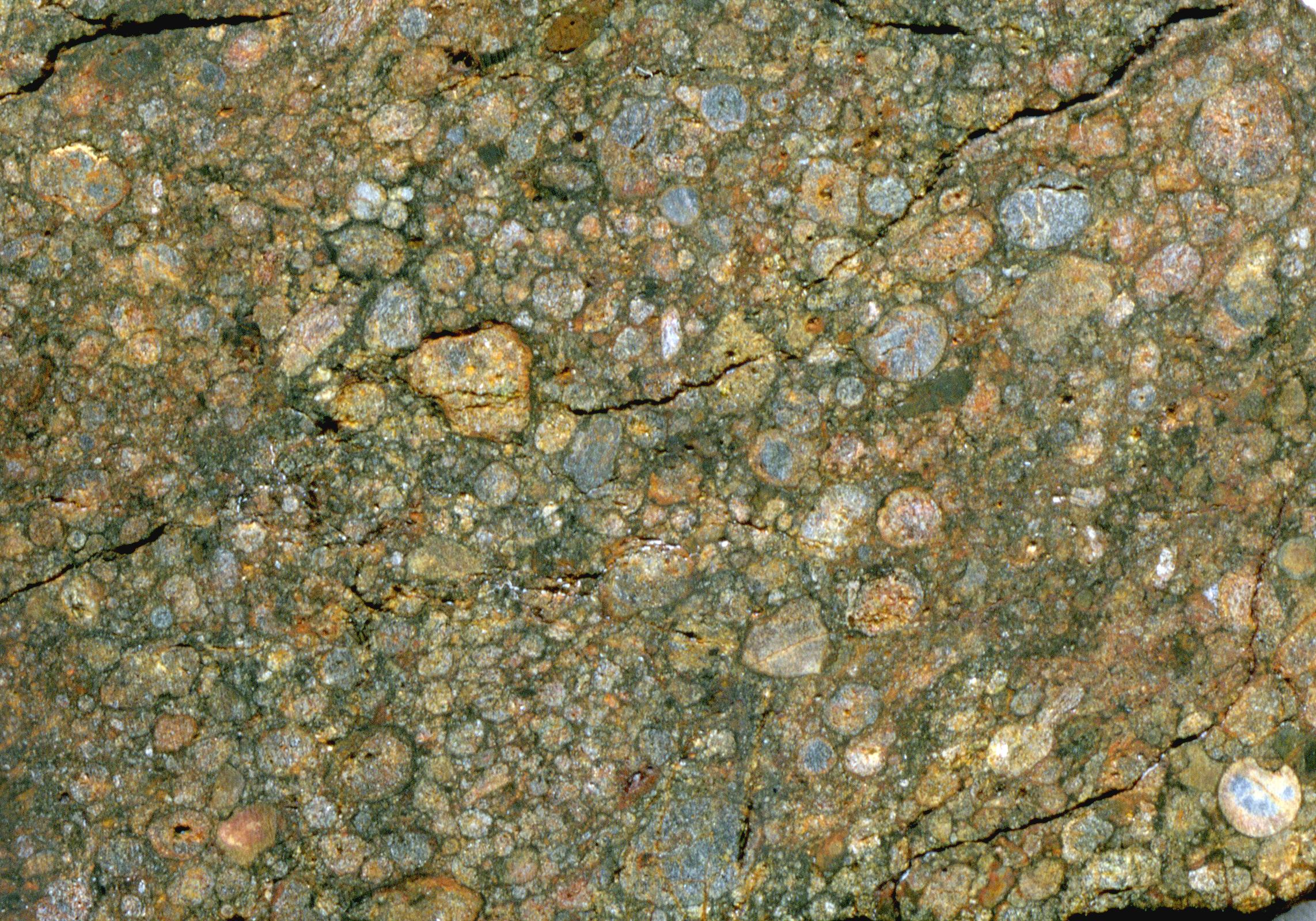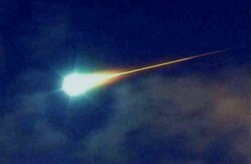|
Aarhus (meteorite)
Aarhus is an H chondrite meteorite that fell to earth on 2 October 1951 at 18:15 in Aarhus, Denmark. The meteor split just before the otherwise undramatic impact and two pieces were recovered. They are known as Aarhus I (at 300g) and Aarhus II (at 420g). Aarhus I was found in the small woodland of Riis Skov, just a few minutes after impact.StenoMusen 15. Pictures of the pieces. Classification It is an H chondrite and belongs to the petrologic type 6, so it was assigned to the H6 group. See also *Glossary of meteoritics * Meteorite falls * Ordinary chondrite The ordinary chondrites (sometimes called the O chondrites) are a class of stony chondritic meteorites. They are by far the most numerous group, comprising 87% of all finds. Hence, they have been dubbed "ordinary". The ordinary chondrites are th ... References Sources * Meteorites found in Denmark 1951 in Denmark {{meteorite-stub ... [...More Info...] [...Related Items...] OR: [Wikipedia] [Google] [Baidu] |
Riis Skov
Riis Skov (''Riis' Forest'' or ''The Forest of Riis'') is a forest and park in Århus, Denmark. It is located south of the district of Risskov, along the Bay of Aarhus. History This small patch of forest, was formally presented to Aarhus in 1395, by Queen Margaret I. Riis Skov was the first public forest in Denmark, where forests traditionally were owned and managed by the Royal family or the nobility and in some cases ordinary farmers. Timber and firewood were very important resources in former times, needed for shipbuilding, house construction and various other important structures, or simply for heating and cooking. Although Riis Skov was a public forest, there was still active forestry going on until around the year 1800, when the large oaks were cut and used for quay-building in the Aarhus harbour. A few of them are still left, as some of the oldest trees in the forest. The forestry aspect gradually diminished and Riis Skov was increasingly viewed as a recreational area by th ... [...More Info...] [...Related Items...] OR: [Wikipedia] [Google] [Baidu] |
Ordinary Chondrite
The ordinary chondrites (sometimes called the O chondrites) are a class of stony chondritic meteorites. They are by far the most numerous group, comprising 87% of all finds. Hence, they have been dubbed "ordinary". The ordinary chondrites are thought to have originated from three parent asteroids, with the fragments making up the H chondrite, L chondrite and LL chondrite groups respectively. Origin It is suspected that they are not representative of typical asteroid parent bodies, but rather of a select few which are advantageously placed to send impact fragments to Earth-crossing orbits. Such positions are e.g. near Kirkwood gaps and/or secular resonances in the main asteroid belt. In fact, only the one rather insignificant asteroid 3628 Božněmcová has been identified to have a spectrum close to the ordinary chondrites. A probable parent body of the H chondrites (comprising about 46% of the ordinary chondrites) is 6 Hebe, but its spectrum is dissimilar due to what is likel ... [...More Info...] [...Related Items...] OR: [Wikipedia] [Google] [Baidu] |
Denmark
) , song = ( en, "King Christian stood by the lofty mast") , song_type = National and royal anthem , image_map = EU-Denmark.svg , map_caption = , subdivision_type = Sovereign state , subdivision_name = Danish Realm, Kingdom of Denmark , established_title = History of Denmark#Middle ages, Consolidation , established_date = 8th century , established_title2 = Christianization , established_date2 = 965 , established_title3 = , established_date3 = 5 June 1849 , established_title4 = Faroese home rule , established_date4 = 24 March 1948 , established_title5 = European Economic Community, EEC 1973 enlargement of the European Communities, accession , established_date5 = 1 January 1973 , established_title6 = Greenlandic home rule , established_date6 = 1 May 1979 , official_languages = Danish language, Danish , languages_type = Regional languages , languages_sub = yes , languages = German language, GermanGerman is recognised as a protected minority language in t ... [...More Info...] [...Related Items...] OR: [Wikipedia] [Google] [Baidu] |
Region Midtjylland
The Central Denmark Region ( da, Region Midtjylland), or more directly translated as the Central Jutland Region and sometimes simply Mid Jutland, is an administrative region of Denmark established on 1 January 2007 as part of the 2007 Danish municipal reform. The reform abolished the traditional counties (''amter'') and replaced them with five new administrative regions. At the same time, smaller municipalities were merged into larger units, cutting the total number of municipalities from 271 to 98. The reform diminished the power of the regional level dramatically in favour of the local level and the national government in Copenhagen. The Central Denmark Region comprises 19 municipalities. Toponymy The Danish name of the region means "Region of Mid Jutland" and describes the location in the central part of the Jutland peninsula, in contrast to Northern Jutland and Southern Jutland (which, together with Funen and some smaller islands, forms the Region of Southern Denmark). For com ... [...More Info...] [...Related Items...] OR: [Wikipedia] [Google] [Baidu] |
H Chondrite
The H type ordinary chondrites are the most common type of meteorite, accounting for approximately 40% of all those catalogued, 46% of the ordinary chondrites, and 44% of all chondrites. The ordinary chondrites are thought to have originated from three parent asteroids, whose fragments make up the H chondrite, L chondrite and LL chondrite groups respectively. Name The name comes from their High iron abundance, with respect to other ordinary chondrites. Historically, the H chondrites have been named ''bronzite chondrites'' or ''olivine bronzite chondrites'' for the dominant minerals, but these terms are now obsolete. Parent body A probable parent body for this group is the S-type asteroid 6 Hebe, with less likely candidates being 3 Juno and 7 Iris. [...More Info...] [...Related Items...] OR: [Wikipedia] [Google] [Baidu] |
Meteorite
A meteorite is a solid piece of debris from an object, such as a comet, asteroid, or meteoroid, that originates in outer space and survives its passage through the atmosphere to reach the surface of a planet or Natural satellite, moon. When the original object enters the atmosphere, various factors such as friction, pressure, and chemical interactions with the atmospheric gases cause it to heat up and radiate energy. It then becomes a meteor and forms a Meteoroid#Fireball, fireball, also known as a shooting star; astronomers call the brightest examples "Bolide#Astronomy, bolides". Once it settles on the larger body's surface, the meteor becomes a meteorite. Meteorites vary greatly in size. For geologists, a bolide is a meteorite large enough to create an impact crater. Meteorites that are recovered after being observed as they transit the atmosphere and Impact event, impact the Earth are called meteorite falls. All others are known as meteorite finds. Meteorites have traditiona ... [...More Info...] [...Related Items...] OR: [Wikipedia] [Google] [Baidu] |
Meteorite Falls
A meteorite fall, also called an observed fall, is a meteorite collected after its fall from outer space was observed by people or automated devices. Any other meteorite is called a "find". There are more than 1,100 documented falls listed in widely used databases, most of which have specimens in modern collections. , the Meteoritical Bulletin Database had 1211 confirmed falls. Importance Observed meteorite falls are important for several reasons. Material from observed falls has not been subjected to terrestrial weathering, making the find a better candidate for scientific study. Historically, observed falls were the most compelling evidence supporting the extraterrestrial origin of meteorites. Furthermore, observed fall discoveries are a better representative sample of the types of meteorites which fall to Earth. For example, iron meteorites take much longer to weather and are easier to identify as unusual objects, as compared to other types. This may explain the increas ... [...More Info...] [...Related Items...] OR: [Wikipedia] [Google] [Baidu] |
Aarhus
Aarhus (, , ; officially spelled Århus from 1948 until 1 January 2011) is the second-largest city in Denmark and the seat of Aarhus Municipality. It is located on the eastern shore of Jutland in the Kattegat sea and approximately northwest of Copenhagen. The largest city in Jutland, Aarhus anchors the Central Denmark Region and the statistical region ' (''LØ'') (lit.: Province East Jutland). The LØ is the second most populous statistical region in Denmark with an estimated population of 903,974 (). Aarhus Municipality defines the greater Aarhus area as itself and eight adjacent municipalities totalling 952,824 inhabitants () which is roughly analogous to the municipal and commercial collaboration Business Region Aarhus. The city proper, with an estimated population of 285,273 inhabitants (), ranks as the 2nd-largest city in Denmark. Aarhus dates back to at least the late 8th century and is among the oldest cities in Denmark. It was founded as a harbour settlement at the ... [...More Info...] [...Related Items...] OR: [Wikipedia] [Google] [Baidu] |
Petrologic Type
A chondrite is a stony (non-metallic) meteorite that has not been modified, by either melting or differentiation of the parent body. They are formed when various types of dust and small grains in the early Solar System accreted to form primitive asteroids. Some such bodies that are captured in the planet's gravity well become the most common type of meteorite by (whether quickly, or after many orbits) arriving on a trajectory toward the planet's surface. Estimates for their contribution to the total meteorite population vary between 85.7% and 86.2%. Their study provides important clues for understanding the origin and age of the Solar System, the synthesis of organic compounds, the origin of life and the presence of water on Earth. One of their characteristics is the presence of chondrules (from the Ancient Greek χόνδρος ''chondros'', grain), which are round grains formed as molten, or partially molten droplets, in the space by distinct minerals, that normally constit ... [...More Info...] [...Related Items...] OR: [Wikipedia] [Google] [Baidu] |
Glossary Of Meteoritics
This is a glossary of terms used in meteoritics, the science of meteorites. # * 2 Pallas – an asteroid from the asteroid belt and one of the likely parent bodies of the CR meteorites. * 4 Vesta – second-largest asteroid in the asteroid belt and likely source of the HED meteorites. * 221 Eos – an asteroid from the asteroid belt and one of the likely parent bodies of the CO meteorites. * 289 Nenetta – an asteroid from the asteroid belt and one of the likely parent bodies of the angrites. * 3103 Eger – an asteroid from the asteroid belt and one of the likely parent bodies of the aubrites. * 3819 Robinson – an asteroid from the asteroid belt and one of the likely parent bodies of the angrites. * IA meteorite – an iron meteorite group now part of the IAB group/complex. * IAB meteorite – an iron meteorite and primitive achondrite of the IAB group/complex. * IB meteorite – an iron meteorite group now part of the IAB group/complex. * IC meteorite – an ... [...More Info...] [...Related Items...] OR: [Wikipedia] [Google] [Baidu] |
Meteorites Found In Denmark
A meteorite is a solid piece of debris from an object, such as a comet, asteroid, or meteoroid, that originates in outer space and survives its passage through the atmosphere to reach the surface of a planet or moon. When the original object enters the atmosphere, various factors such as friction, pressure, and chemical interactions with the atmospheric gases cause it to heat up and radiate energy. It then becomes a meteor and forms a fireball, also known as a shooting star; astronomers call the brightest examples " bolides". Once it settles on the larger body's surface, the meteor becomes a meteorite. Meteorites vary greatly in size. For geologists, a bolide is a meteorite large enough to create an impact crater. Meteorites that are recovered after being observed as they transit the atmosphere and impact the Earth are called meteorite falls. All others are known as meteorite finds. Meteorites have traditionally been divided into three broad categories: stony meteorites that a ... [...More Info...] [...Related Items...] OR: [Wikipedia] [Google] [Baidu] |
.jpg)





